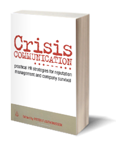Our friends at Cision have just released their 2011 Cision-Newhouse School Digital Influencers Survey. It has some interesting findings and you can read the full research here.
Now, much as we love research and its findings, we do have to identify that Cision's research is often heavily skewed to the bias of selling media lists and the Cision services. That said, we all benefit from understanding exactly how to use social media with the media.
The 2011 digital influencer survey shows that social platforms like Twitter, Facebook and LinkedIn (with the impact of Google+ soon to be felt) continue to revolutionize how those who create digital content do their jobs: how often they post content (“file stories”) and how they identify stories and trends, cultivate and qualify sources, and share information.
But – perhaps even more importantly – it is apparent that social media has empowered anyone with a voice that resonates with a community to build influence and vie for the same attention and audience as traditional media.
These “other content creators” may not be connected to an established news organization or blog, but their “social capital” is so significant that they have a direct impact on consumers and other influencers.
Those who define themselves as journalists tend to have very different (and less positive) perceptions about the usefulness and accuracy of social media.
Yet all respondents agree that social media is a superior way to share stories, connect with communities, and make their voices heard.
Bottom line - what does this mean to PR agencies and organizations that use agencies? Well, PR agencies need to use social media tools to inform/converse with journalists and those writing materials that customers are reading. But they can't rely on them - social media needs to be integrated into journalist outreach.
Thursday, December 15, 2011
Tuesday, December 6, 2011
Power is nothing without Control
...according to the tire manufacturer Pirelli. And so it is with public relations. Gone are the days when an organization can fully control their corporate message to the media.
In days gone by, it was normal for an organization’s employee handbook to strictly dictate that no employee could speak to the media without prior approval and spokesperson media training. No problem.
Then a few years ago social media popped up. According to a recent piece of research by Altimeter, companies average an overwhelming number of corporate owned accounts – about 178. That is a bunch of people from different departments and around the globe that are speaking on social media platforms, that the media are seeing. And that’s before we count the personal SM accounts of employees who happen to mention their job. So what’s to be done?
NettResults recommends three levels of corporate communication development:
1 - Relinquish a mindset of control - instead ‘enable’. In business school we were taught to foster message control and encourage all corporate representatives to stay on message. Yet today, as multiple business units from support, sales, HR and beyond participate in social technologies, communication is spread to the edges of the company – not just from the PR department. As a result, PR groups have changed their mindset to safely enabling business units to communicate, based on pre-set parameters they put in place through governance, coordination, and workflow.
2 - Roll out enterprise workflows - education programs at four levels. We’ve found that savvy corporations have detailed workflows, including sample language in which employees should respond. Beyond creating these workflows, they must be distributed throughout the enterprise through education programs, and drilled. We’ve found savvy corporations have up to four types of education programs spanning: Executive team, social media team, business stakeholder teams, and finally all associates. Even if the mandate is for rank and file employees to not respond in social on behalf of the company, reinforcing education is still required.
3 - Run mock crises. Lastly, we’ve found a closer relationship with media relations, social media and crisis communications. Savvy corporations are working with agency partners such as NettResults to setup mock crisis drills where they approach a week-long crises in a number of hours in private. Not only does this test the mettle of the organization it provides useful training so companies can respond faster, in a more coordinated approach. We have already witnessed health organizations receiving ‘social-crises-ready’ compliance notices and we expect compliance programs to spread into other industries.
Get ready – take control.
In days gone by, it was normal for an organization’s employee handbook to strictly dictate that no employee could speak to the media without prior approval and spokesperson media training. No problem.
Then a few years ago social media popped up. According to a recent piece of research by Altimeter, companies average an overwhelming number of corporate owned accounts – about 178. That is a bunch of people from different departments and around the globe that are speaking on social media platforms, that the media are seeing. And that’s before we count the personal SM accounts of employees who happen to mention their job. So what’s to be done?
NettResults recommends three levels of corporate communication development:
1 - Relinquish a mindset of control - instead ‘enable’. In business school we were taught to foster message control and encourage all corporate representatives to stay on message. Yet today, as multiple business units from support, sales, HR and beyond participate in social technologies, communication is spread to the edges of the company – not just from the PR department. As a result, PR groups have changed their mindset to safely enabling business units to communicate, based on pre-set parameters they put in place through governance, coordination, and workflow.
2 - Roll out enterprise workflows - education programs at four levels. We’ve found that savvy corporations have detailed workflows, including sample language in which employees should respond. Beyond creating these workflows, they must be distributed throughout the enterprise through education programs, and drilled. We’ve found savvy corporations have up to four types of education programs spanning: Executive team, social media team, business stakeholder teams, and finally all associates. Even if the mandate is for rank and file employees to not respond in social on behalf of the company, reinforcing education is still required.
3 - Run mock crises. Lastly, we’ve found a closer relationship with media relations, social media and crisis communications. Savvy corporations are working with agency partners such as NettResults to setup mock crisis drills where they approach a week-long crises in a number of hours in private. Not only does this test the mettle of the organization it provides useful training so companies can respond faster, in a more coordinated approach. We have already witnessed health organizations receiving ‘social-crises-ready’ compliance notices and we expect compliance programs to spread into other industries.
Get ready – take control.
Subscribe to:
Posts (Atom)

